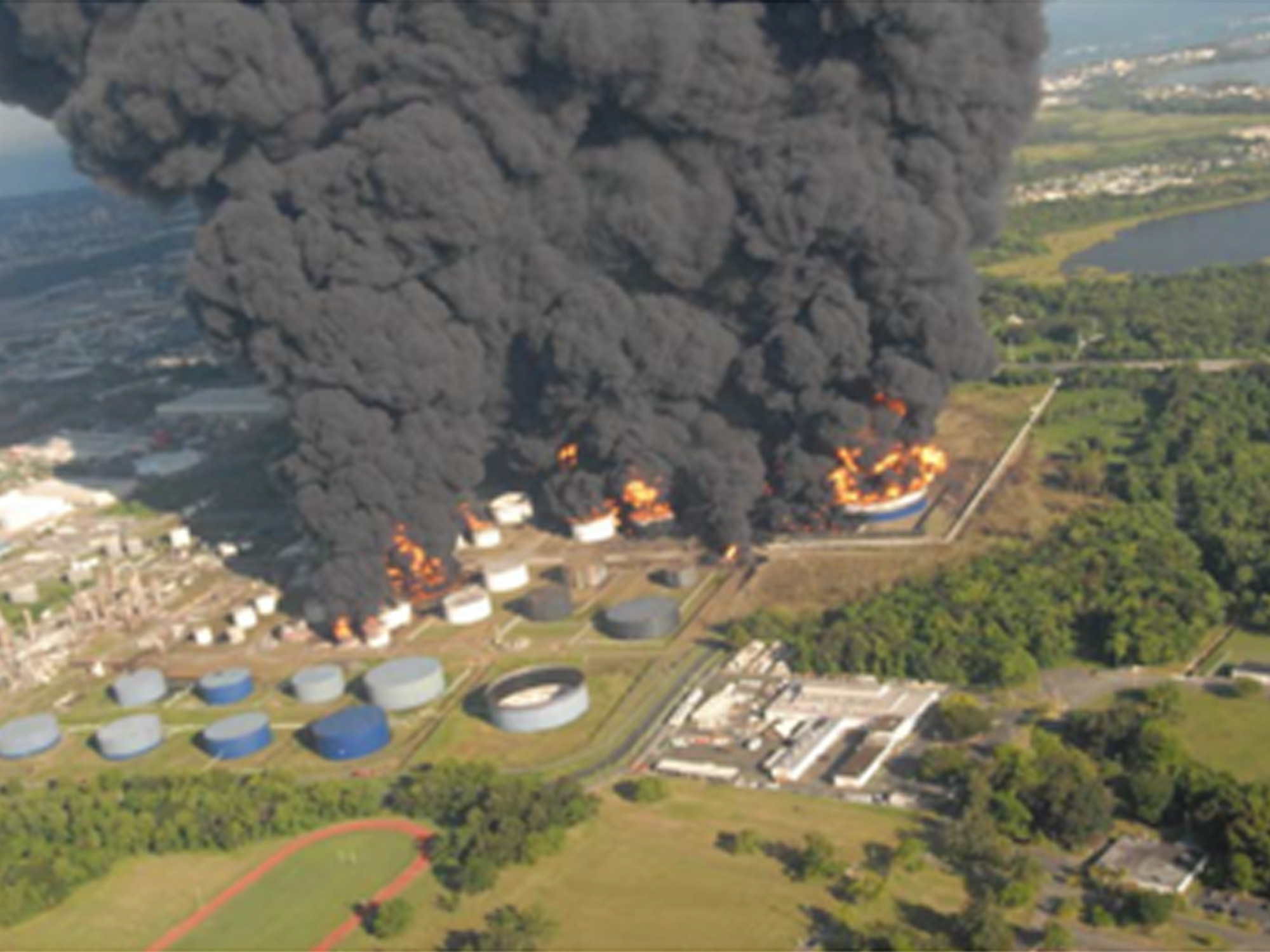Due to the nature of the stored materials, atmospheric hydrocarbon storage tank facilities are not exempted from major accident incidents that could result in human fatalities and risk of damage to the environment and assets. Risk assessment for the storage facility requires consideration of potentially dangerous process and non-process events and their impacts. Potential hazardous events that may occur in hydrocarbon storage tank facilities include fire (pool fire, tank surface fires, jet fires, boil-over, forest fires, etc.), blast (e.g. vapor cloud blast (VCE), toxic smoke and gas, secondary water and liquid Water or liquid overflow, earthquake, lightning (as a source of spark), hurricane, and terrorist attack as a result of the collapse or overrun of retaining walls.
Any accident can cause worse consequences due to the "domino effect". Therefore, any risk assessment study for a storage tank facility should properly account for all possible domino effects and present an overall risk outcome. Domino effects can be caused by process and non-process hazards. These non-process impacts should be especially considered in storage tank facilities, earthquake zones or regions exposed to hurricanes. In 1999, in Kocaeli (Turkey) occurred damage from the fire of storage tanks as is evident from the earthquake disaster, has significant harm to the environment and the economy. Similarly, significant human injury, environmental damage and economic impact occurred following the Buncefield accident in 2005, followed by the fire after the blast. Some of the other major accident events where domino effects from process and non-process hazards have been observed are Tacoa in 1982, Venezuela (boil-over), Mexico City in 1984 (blast), Japan in 2011 (tsunami), Murphy Oil liquid in 2005. overflow (hurricane), Porto Rica (fire) in 2009 and Baghdad, Iraq (terrorist attack) in 2016.
Fire: Possible fire scenarios that may occur in a tank accident can be listed as follows; rim seal fires, roof fires, full surface fires, dike fire, jet fires (due to a pipe blast, for example in a seismic event), fires caused by pontoon blasts and boil-over. The worst possible fire scenarios are full surface fires and boil-over fires. Full surface fire is the fire that occurs when some or all of the liquid in the tank is exposed to fire when the tank roof cannot float and sink. Boil-over is a fire that occurs when liquid or water inside the tank mixes with a hydrocarbon with a wide boiling range, such as crude oil.
Blast: It has long been known that vapor cloud blasts can occur in tank farms. Vapor cloud blasts are destructive because the escaping vapors can diffuse to other places very quickly and can cause a large blast and subsequent fire on contact with an ignition source.
Toxic Smoke: Burning hydrocarbon fuel generates smoke and toxic gases. The consequences of these on human health can range from drowning to burns. Depending on the weather conditions, smoke and gases released during fire can cause various dangers. They can be transported long distances from fire by wind and damage a wider area.
Seismic Hazard (Earthquake): Seismic hazard is the most important natural threats for storage tanks. A seismic event can lead to subsequent events such as fire and explosion, as discussed in many of the author's works. Potential earthquake damages for typical atmospheric tanks can be listed as follows; buckling of the tank wall (elephant foot sprain and knee sprain), tearing of welding beams on the tank wall due to tensile stresses, buckling of the upper part of the tank wall due to sloshing effect.
Hurricane: It was reported that there were fuel tanks damaged by hurricanes in Moore Oklahoma in May 2013, and Niles, Ohio on May 31, 1985. Types of damage include roof damage due to insufficient connection of the roof welds, overturning from the tank bottom, and tank displacement due to hurricane. Tanks can also be torn by hitting flying parts due to a hurricane.
Containment Loss: Fluid loss is possible due to fire, explosion and tank ruptures caused by seismic or overfilling of the tank. This damage harms people, the environment, and can cause companies to lose their reputation. In addition, loss of property and cleaning costs are very high.
Terrorist Attack: Studies on terrorist target preferences show that terrorist attacks mostly aim to result in death and harm the economy. Recent terrorist attacks and attempts at attacks have shown that in the chemical and petrochemical industries, storage tanks containing large amounts of hazardous materials can be a terrorist target that poses a significant threat to public safety.





